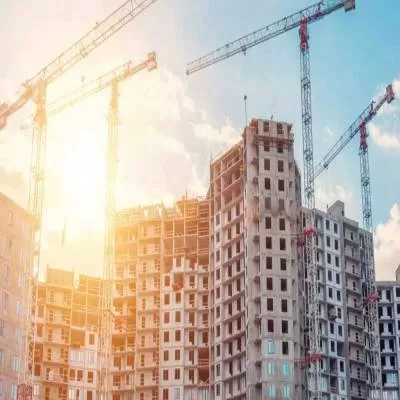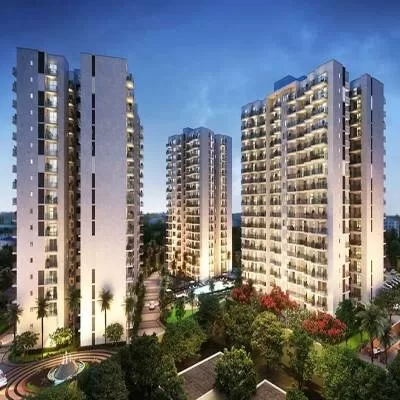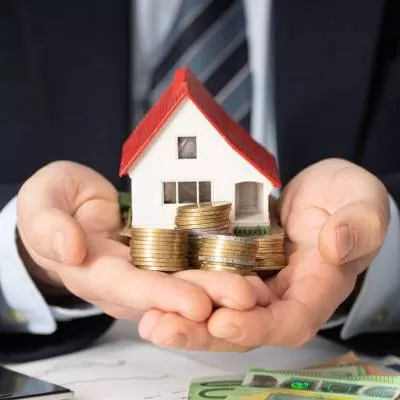- Home
- Real Estate
- We are investing over Rs.1,100 crore to expand our fibreglass facility in Taloja

We are investing over Rs.1,100 crore to expand our fibreglass facility in Taloja
Making it to the Fortune 500® list for 62 consecutive years is big! That's what Owens Corning has achieved through its market-leading products and innovations. With a presence in over 27 countries, the company started business in India in 1998 with a focus on building materials and composite solutions. And now, it is looking at collaborating with various stakeholders in bringing composite solutions to India's ambitious Smart City programme.
As Jeff Rodrigues, Managing Director, Owens Corning (India), says, 'Owens Corning's advanced materials-based solutions support the government's guidelines of efficient water supply and waste management, energy conservation, roads and infrastructure.' He shares more with RAHUL KAMAT.
Tell us about your key offerings.
Owens Corning's offerings focus on four major areas:
Water and sewage: We work with our ecosystem to provide
glass fibre-based composite (GFRP) pipes and installation, components made from GFRP materials for packaged and area-based sewage and effluent treatment plants, GFRP manhole covers and manhole systems replacing conventional precast concrete and steel. We also actively provide geo membrane-based pond lining solutions for water harvesting and conservation.
Solid waste management and sanitation: Smart dustbins and components of bio digesters that are smart, cost-effective and durable replacements for stainless steel. We also have designs for modular toilets made from Glassfibre Reinforced Concrete (GRC) and GFRP materials.
Energy-efficiency and green buildings: Glass wool insulation provides excellent thermal and acoustic properties for varied applications of HVAC, metal buildings and acoustics. Further, glass fibre-based poles complementing emerging LED lighting provide nice attributes of being shock-proof, corrosion-resistant and engineered for varied and severe wind loads.
Roads and infrastructure: Through our products, we offer glass fibre-based solutions for reinforcements for bitumen roads; GFRP-based rebars for concrete roads and GFRP-based solar mounting structures for rooftop and power generation projects. Further, most wind blades in India are already manufactured from GFRP. Central strength members used to stiffen optical fibre cables are also being made today, in India, from composites. Lastly, GFRP, owing to its design freedom attributes, can be smartly used for making architectural components for landscaping and beautification around rivers and cities.
How are these offerings helping Indian cities?
Installation gets easier and quicker as these can be made and supplied in modular component form and functionally integrated. Also, they are durable owing to their inherent properties of corrosion-resistance. Further, as these materials and components are engineered to suit specific requirements that vary from city to city (eg, UV-resistance, wind-resistance, fire-resistance, electrically nonconductive, corrosion-resistance, lighter weight for a given strength or modulus), these can help make installations safer and last longer.
The company advocates the use of glass fibre-reinforced concrete (GFRC) panels in construction...
Typically, GFRC helps reduce the thickness and weight of concrete by a factor of 10. This helps quick, easier installation. Also, it brings the advantages of being lighter in weight and higher in tensile strength than conventional concrete. This enables countertop slabs to be made without seams and span greater lengths. Owens Corning produces specially engineered alkali resistant glass fibres that act as reinforcements in GFRC. Engineered to be compatible with concrete, they aid efficient dispersion in concrete, making parts aesthetically stronger. Further, they contribute to lower porosity, and hence, reduced water penetration. This enables longer life and lower maintenance over the life-cycle of components. Also, GRC can be cast using decorative form liners to create architectural wall panels as thin and light as standard wood panelling while permitting more flexibility in shape, colour and texture. Sanitation, redevelopment and new buildings and housing are prominent segments for focus in smart cities. We have successfully supplied solutions for several installations, specifically around sanitation and architecture, across India.
Which areas do you think will see growth in the current year?
We should see wind, telecom and pipes for drinking water and irrigation grow strongly this year as these are critical for the Indian economy's growth. We will continue to support our ecosystem with local manufacturing, consistent quality and great service. We are expanding our manufacturing footprint in India with an incremental investment of over Rs 1,100 crore to serve future growth.
What opportunities do you see in the Smart Cities mission?
We are working with the CEOs and municipal commissioners of these smart cities to get fibreglass approved and educate them on the inherent benefits of fibreglass over traditional metals. Benefits include corrosion-resistance, and hence, low life-cycle maintenance, lighter weight, and our ability to leverage our global footprint and leadership position in composites, and our ecosystem of fabricators, contractors, etc, in India, to provide turnkey solutions for smart cities.
Tell us about the trends in building materials and the company's contribution towards R&D?
We will see more focus on corrosion resistance and life-cycle maintenance, energy-efficiency, lighter weight, and overall performance reliability. Fibreglass composites perform exceptionally under these conditions owing to the inherent properties of fibreglass and the high degree of research and engineering expertise we put into designing our products. We continue to leverage our global R&D and local applications support expertise to provide elegant and efficient solutions for our customers.
What are your future plans, new product launches and expansions?
We are investing over Rs 1,100 crore to expand our fibreglass facility in Taloja, and are also launching new products in the industrial, wind and pipe markets. Overall, we will continue to explore the construction market as fibreglass has a natural value proposition for this market.
- Jeff Rodrigues, Managing Director, Owens Corning (India) Making it to the Fortune 500® list for 62 consecutive years is big! That's what Owens Corning has achieved through its market-leading products and innovations. With a presence in over 27 countries, the company started business in India in 1998 with a focus on building materials and composite solutions. And now, it is looking at collaborating with various stakeholders in bringing composite solutions to India's ambitious Smart City programme. As Jeff Rodrigues, Managing Director, Owens Corning (India), says, 'Owens Corning's advanced materials-based solutions support the government's guidelines of efficient water supply and waste management, energy conservation, roads and infrastructure.' He shares more with RAHUL KAMAT. Tell us about your key offerings. Owens Corning's offerings focus on four major areas: Water and sewage: We work with our ecosystem to provide glass fibre-based composite (GFRP) pipes and installation, components made from GFRP materials for packaged and area-based sewage and effluent treatment plants, GFRP manhole covers and manhole systems replacing conventional precast concrete and steel. We also actively provide geo membrane-based pond lining solutions for water harvesting and conservation. Solid waste management and sanitation: Smart dustbins and components of bio digesters that are smart, cost-effective and durable replacements for stainless steel. We also have designs for modular toilets made from Glassfibre Reinforced Concrete (GRC) and GFRP materials. Energy-efficiency and green buildings: Glass wool insulation provides excellent thermal and acoustic properties for varied applications of HVAC, metal buildings and acoustics. Further, glass fibre-based poles complementing emerging LED lighting provide nice attributes of being shock-proof, corrosion-resistant and engineered for varied and severe wind loads. Roads and infrastructure: Through our products, we offer glass fibre-based solutions for reinforcements for bitumen roads; GFRP-based rebars for concrete roads and GFRP-based solar mounting structures for rooftop and power generation projects. Further, most wind blades in India are already manufactured from GFRP. Central strength members used to stiffen optical fibre cables are also being made today, in India, from composites. Lastly, GFRP, owing to its design freedom attributes, can be smartly used for making architectural components for landscaping and beautification around rivers and cities. How are these offerings helping Indian cities? Installation gets easier and quicker as these can be made and supplied in modular component form and functionally integrated. Also, they are durable owing to their inherent properties of corrosion-resistance. Further, as these materials and components are engineered to suit specific requirements that vary from city to city (eg, UV-resistance, wind-resistance, fire-resistance, electrically nonconductive, corrosion-resistance, lighter weight for a given strength or modulus), these can help make installations safer and last longer. The company advocates the use of glass fibre-reinforced concrete (GFRC) panels in construction... Typically, GFRC helps reduce the thickness and weight of concrete by a factor of 10. This helps quick, easier installation. Also, it brings the advantages of being lighter in weight and higher in tensile strength than conventional concrete. This enables countertop slabs to be made without seams and span greater lengths. Owens Corning produces specially engineered alkali resistant glass fibres that act as reinforcements in GFRC. Engineered to be compatible with concrete, they aid efficient dispersion in concrete, making parts aesthetically stronger. Further, they contribute to lower porosity, and hence, reduced water penetration. This enables longer life and lower maintenance over the life-cycle of components. Also, GRC can be cast using decorative form liners to create architectural wall panels as thin and light as standard wood panelling while permitting more flexibility in shape, colour and texture. Sanitation, redevelopment and new buildings and housing are prominent segments for focus in smart cities. We have successfully supplied solutions for several installations, specifically around sanitation and architecture, across India. Which areas do you think will see growth in the current year? We should see wind, telecom and pipes for drinking water and irrigation grow strongly this year as these are critical for the Indian economy's growth. We will continue to support our ecosystem with local manufacturing, consistent quality and great service. We are expanding our manufacturing footprint in India with an incremental investment of over Rs 1,100 crore to serve future growth. What opportunities do you see in the Smart Cities mission? We are working with the CEOs and municipal commissioners of these smart cities to get fibreglass approved and educate them on the inherent benefits of fibreglass over traditional metals. Benefits include corrosion-resistance, and hence, low life-cycle maintenance, lighter weight, and our ability to leverage our global footprint and leadership position in composites, and our ecosystem of fabricators, contractors, etc, in India, to provide turnkey solutions for smart cities. Tell us about the trends in building materials and the company's contribution towards R&D? We will see more focus on corrosion resistance and life-cycle maintenance, energy-efficiency, lighter weight, and overall performance reliability. Fibreglass composites perform exceptionally under these conditions owing to the inherent properties of fibreglass and the high degree of research and engineering expertise we put into designing our products. We continue to leverage our global R&D and local applications support expertise to provide elegant and efficient solutions for our customers. What are your future plans, new product launches and expansions? We are investing over Rs 1,100 crore to expand our fibreglass facility in Taloja, and are also launching new products in the industrial, wind and pipe markets. Overall, we will continue to explore the construction market as fibreglass has a natural value proposition for this market.




















